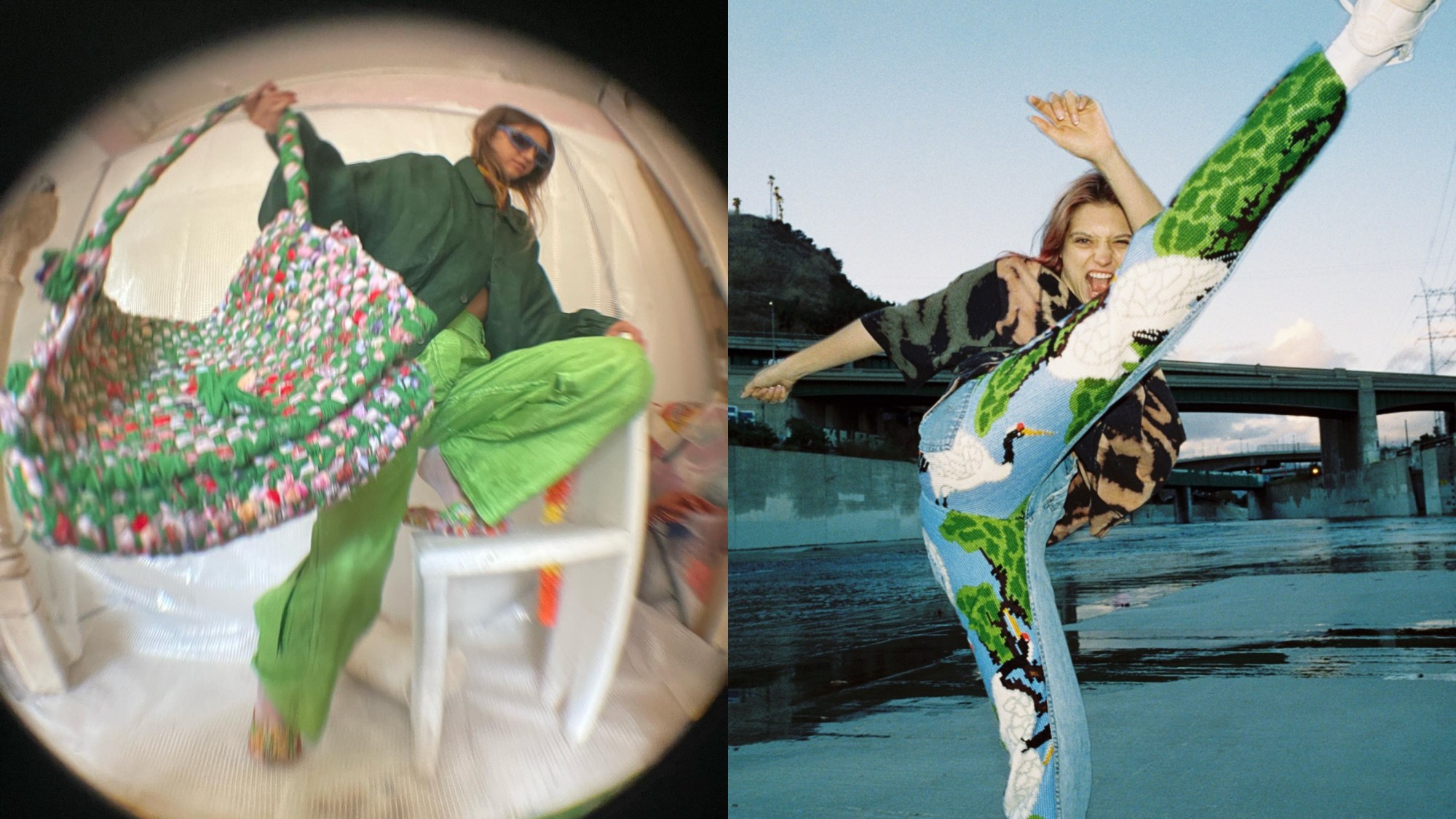One casual stroll through the Lower East Side, even a deep dive on Depop, will confirm that when it comes to getting dressed today, vintage, handmade and one-of-a-kind garments are taking center stage. The sport of seeking out recycled and revitalized pieces has steadily grown in popularity in recent years, almost as an antidote to social media’s constant stream of new products and the harsh truths about the unethical nature of fast fashion. This makes completely unique garments that hold history and handiwork as sought after as the latest SSENSE exclusive. As a result, a new wave of craft-focused designers, with their hand-stitched patchworks, vegetable-dyed silks and painted denim, are catering to this evolving consumer mindset and, at the same time, revolutionizing bespoke fashion. They’re addressing the realities of retail’s environmental impact by using existing materials: taking something old and making it beaded, embellished and new again.
Over the last few years, a handful of brands have established themselves as craft-first clothing pioneers: Bode holds court on Hester Street, Café Forgot is still downtown’s signature spot to shop small and Collina Strada is going on 10 years of reinventing whimsical, deadstock fabrics. While the craftcore aesthetic, which incorporates beading, crochet and embroidery, peaked during the pandemic as many were stuck at home finding solace in making things (sourdough, tie dye, etc.), craft is ingrained in fashion. Andrea Smith, Kat Rose, Siam Circle and Tigra Tigra take this one step further, however, putting their own spin on sustainability and reinterpreting what it means to be a brand, or even a designer, today.
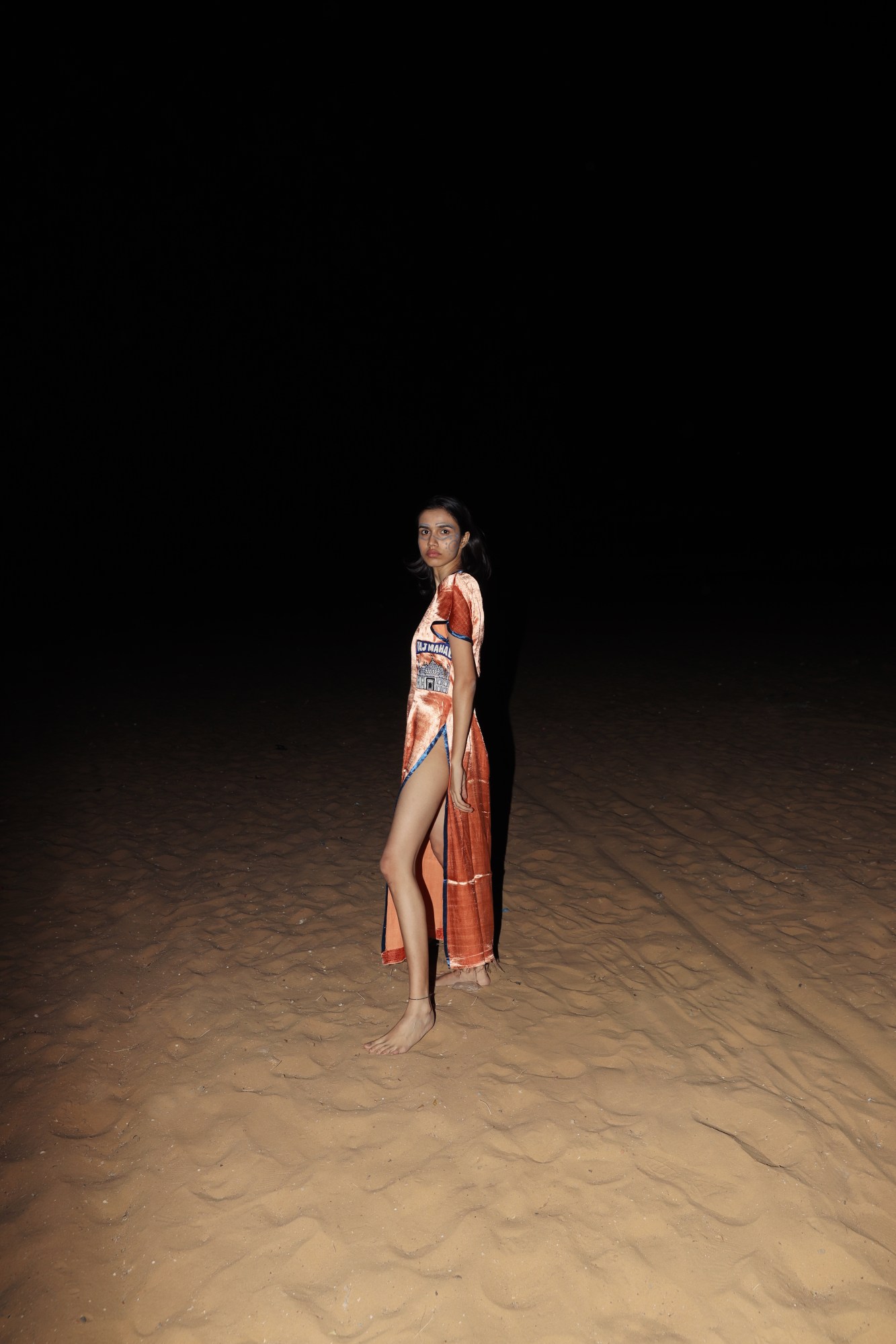
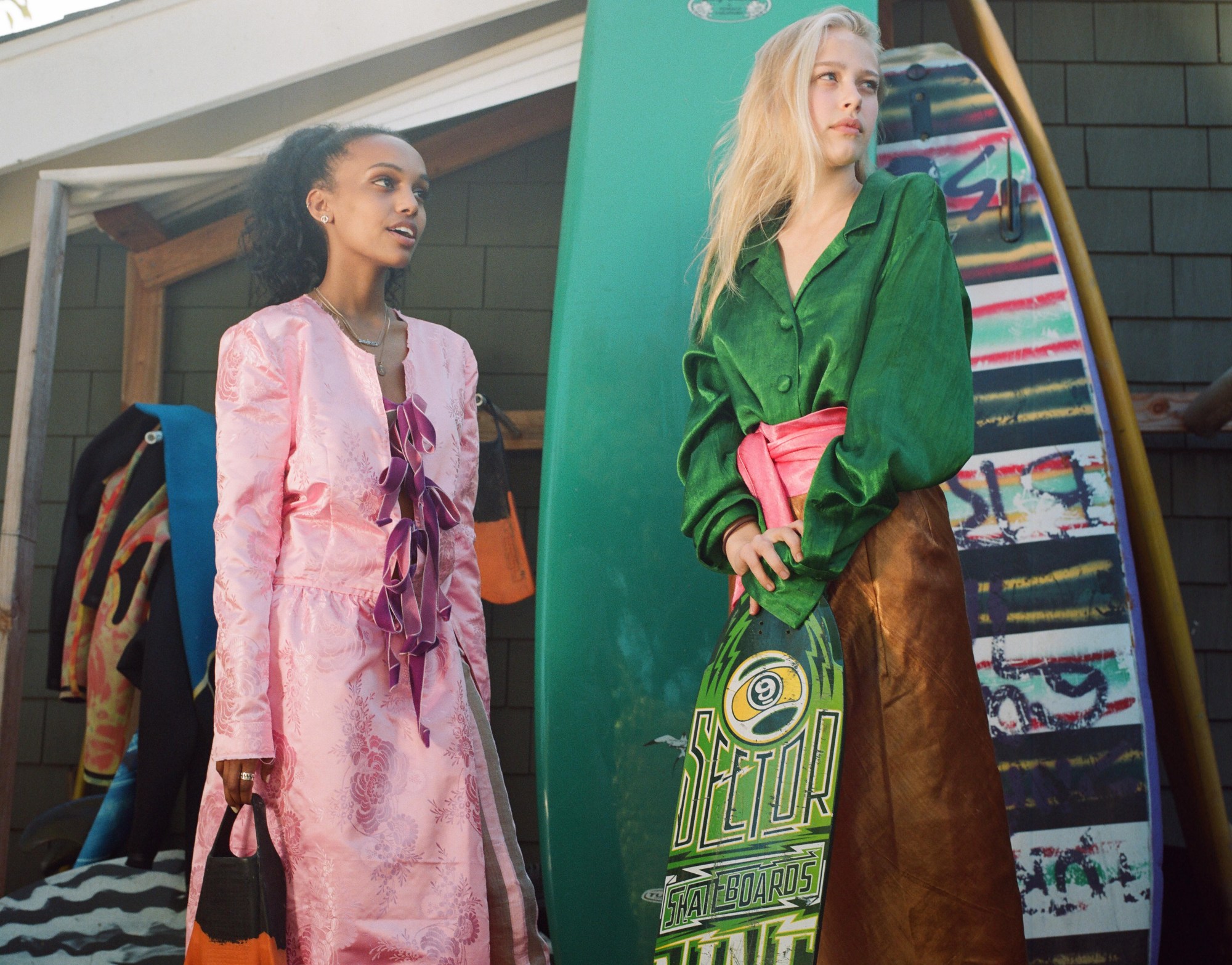
In a world where our daily lives are more automated and digital than ever, it’s no wonder irreplicable, upcycled pieces that speak to personal style over endless trends are more appealing — the very nature of repurposing found fabrics infuses the final product with a past life, giving it more depth and meaning. Bailey Hunter, the founder behind Los Angeles-based textile revival and design studio Tigra Tigra, summarizes the need for a tactile remedy well with her brand’s tagline: Handicraft futurism.
After studying textile and visual design at Parsons and then designing textiles for an NGO in India, Bailey established Tigra Tigra in 2016. The vibrantly-dyed fabrics and hand-sewn motifs that make up the brand’s collection of joy-evoking pieces are heavily influenced by the Indian way of jugaad, or innovative problem-solving. “It’s about finding creative, low-cost, efficient solutions — making something work with what is available,” Bailey says.
Tigra Tigra’s garments are comprised of 60% deadstock materials, while the rest of the fabrics are made using low-impact, traditional weaving techniques that date back to the Ottoman Empire. Her current collection features a hand-loomed linen-silk dress dyed with natural tea stain and finished with fish and sun appliqué, trousers made from cottons that are colored by local dye masters and hand-woven shoulder bags made entirely from recycled fabrics — all crafted in India. Tigra Tigra also partners with three artisan-owned businesses in Gujarat and one non-profit organization in Cape Town to develop and produce the collection without electricity (each piece is made from hand-powered looms). With a team of eight full-time employees, the small company is able to ensure fair wages throughout their supply chain. Bailey, who doubles as Creative Director for luxury cashmere brand Elder Statesman, prefers a purpose-built, tailor-made way of making clothing: “Every single piece has unique detail, no two pieces are exactly alike. For me, this is a better way of doing things.”
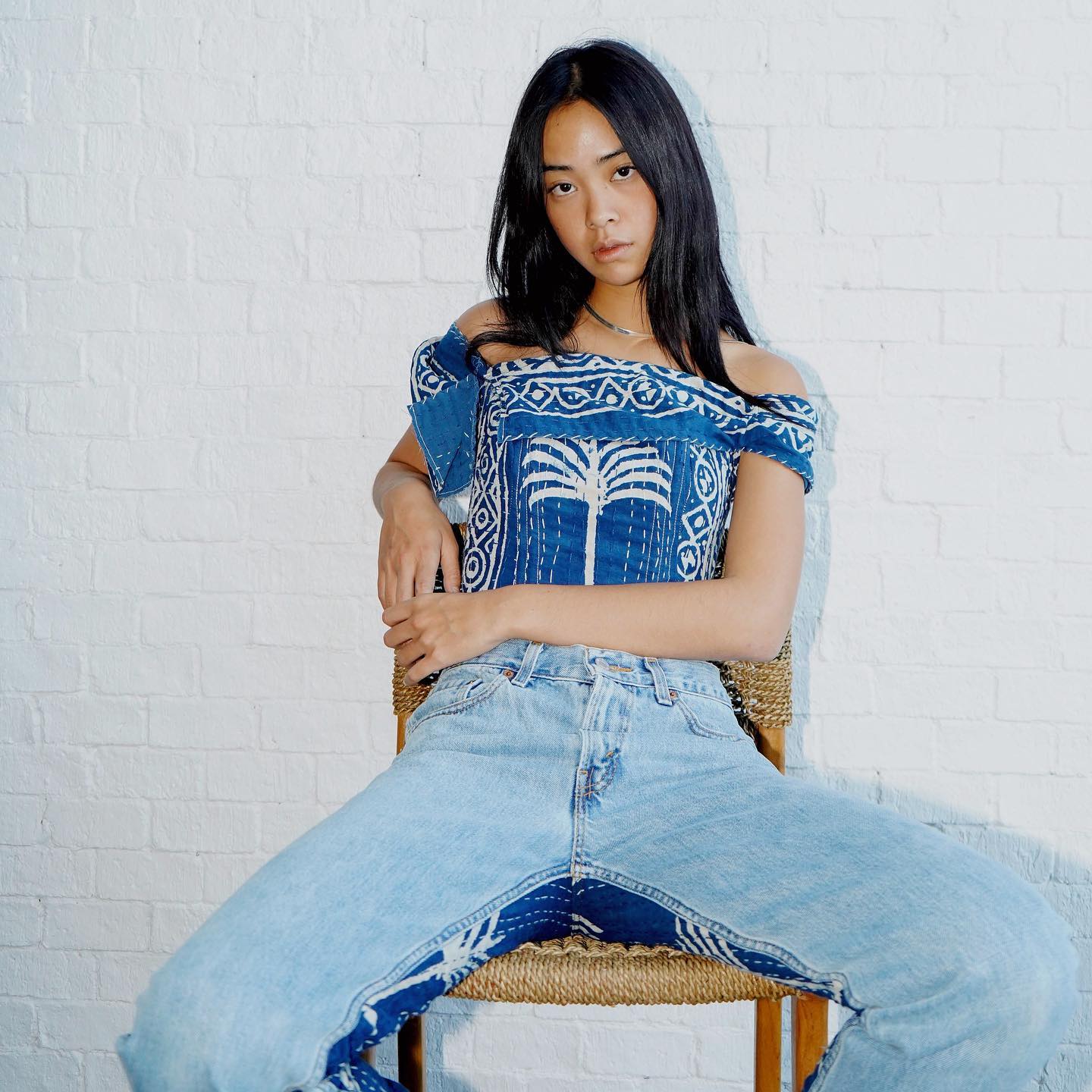
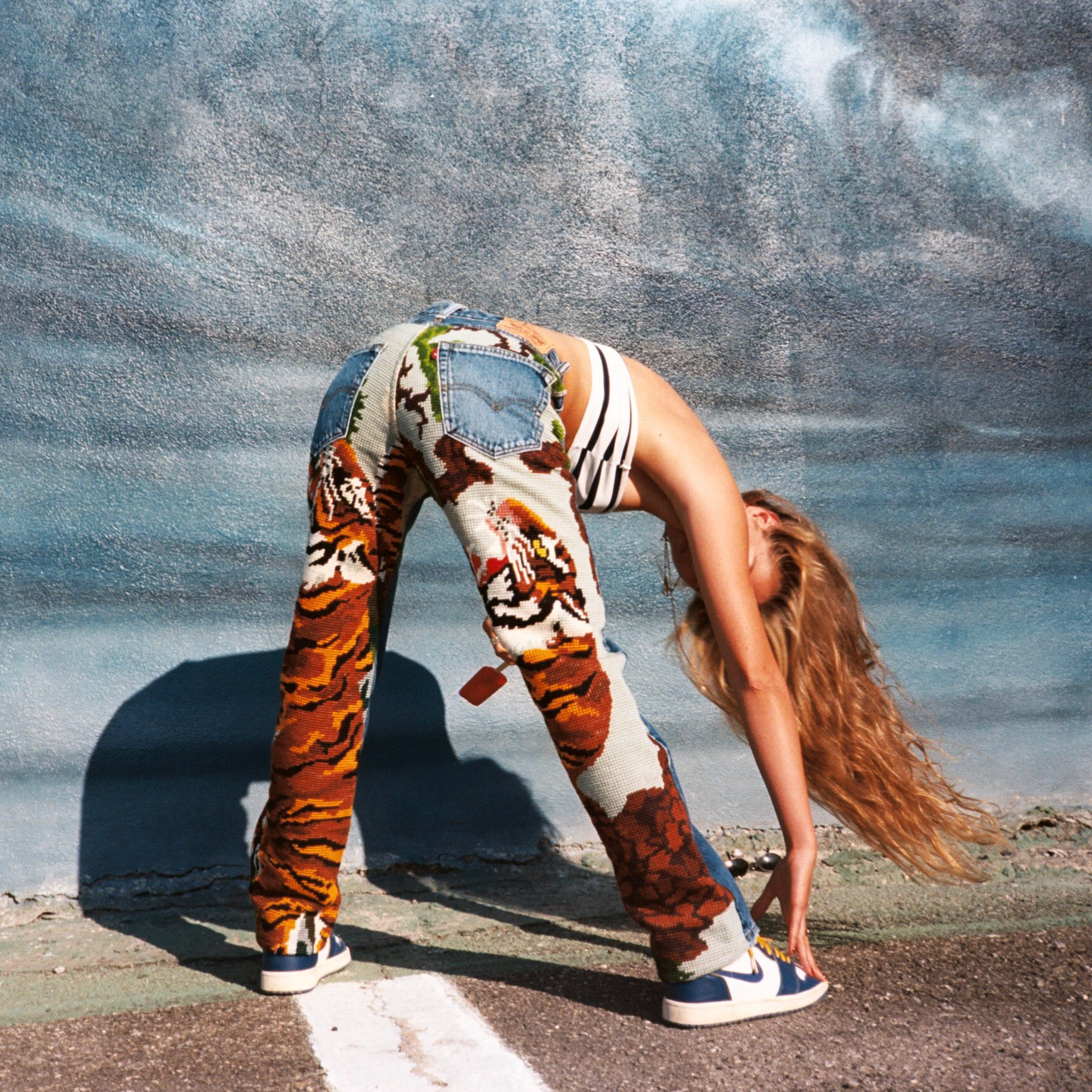
The same sentiment is true for Mariuka Corsini, the founder and designer of upcycling brand Siam Circle. Like Bailey, Mariuka spent years working alongside textile experts and observing new ways of reusing fabrics. She founded Siam Circle in 2019, after working for an advertising agency in Singapore and traveling around Southeast Asia, where she witnessed creative solutioning for an overabundance of clothing. “I was discovering secondhand clothing shops and learned that Thailand is the world’s biggest importer of used clothing,” Mariuka, who splits her time between LA and Bangkok, explains. Ten hours south of the city, a collective of warehouses are filled with preowned denim, T-shirts and sweatshirts. That’s where she sources most of her fabrics, which are then cut and re-sewn into quilted corsets and embroidered denim. “The collection is 100% upcycled,” Mariuka says. “Our generation has heard so much about how polluting fashion is… I couldn’t just start a brand without any purpose.”
While the pandemic made it difficult for Mariuka to work in person with her team in Bangkok and maintain a regular launch cadence, Siam Circle is now aiming to release seasonal collections of one-off pieces (with a summer launch arriving this month). The limited-edition nature of Siam Circle’s launches has allowed the brand to build an engaged community on social media, which includes a steady flow of DMs from stylists. “I’ve been doing a lot of direct sales through Instagram outreach,” Mariuka says. “Social media gives you a lot of visibility as a designer today. There are so many people creating their own pieces now, and if you have a great product, people will find you.”
Kat Rose has been painting and drawing on preloved clothing since 2016, but everything changed when Dua Lipa’s stylist, Lorenzo Posocco, found her on Instagram in 2021. Lorenzo sent Kat a selection of his favorite pieces she had made in the past as guidance for a pair of custom-made, rainbow checkered jeans Dua would be photographed wearing soon after. After several years of taking commissions from her friends, the popularity of her customized denim and silk nightgowns ignited. “I’ll get DMs from stylists or people wanting to place custom orders,” the English designer says. “I see loads of people on Instagram hand drawing on stuff now, which is really fun to see. I think it’s because people are tired of mass production; they want a piece they can feel good about, something nobody else is going to have.”
From Y2K baguette bags to silk slips sporting her signature doodles, everything Kat sells is sourced from eBay, Depop or local charity shops. For her, there’s no reason to make new clothing or accessories as long as people are selling their old ones. When she’s not designing, Kat works one-on-one with autistic children as a teaching assistant. Her admiration for her students’ drawings is apparent in her own designs, which feature playful and colorful illustrations of cats, people, butterflies and mushrooms. Kat also draws inspiration from like-minded brands among the community of craft-focused creators, such as cult-jewelry line Ian Charms (which is owned by friend Lisa Sahakian).
Alongside Dua Lipa, Kat has made pieces for mega-creator Emma Chamberlain, musician Baby Queen and artist Hila Klein — sales that have helped the designer maintain a stable rhythm of buzz and business. “Eventually I would love to build my brand full time, but right now I’m trying to figure out the balance of building stock and working on one-off projects. It’s good to have a job that allows me to get a break from it and clear my head, so that when I come back to my brand work, I’ve got a fresh perspective.”

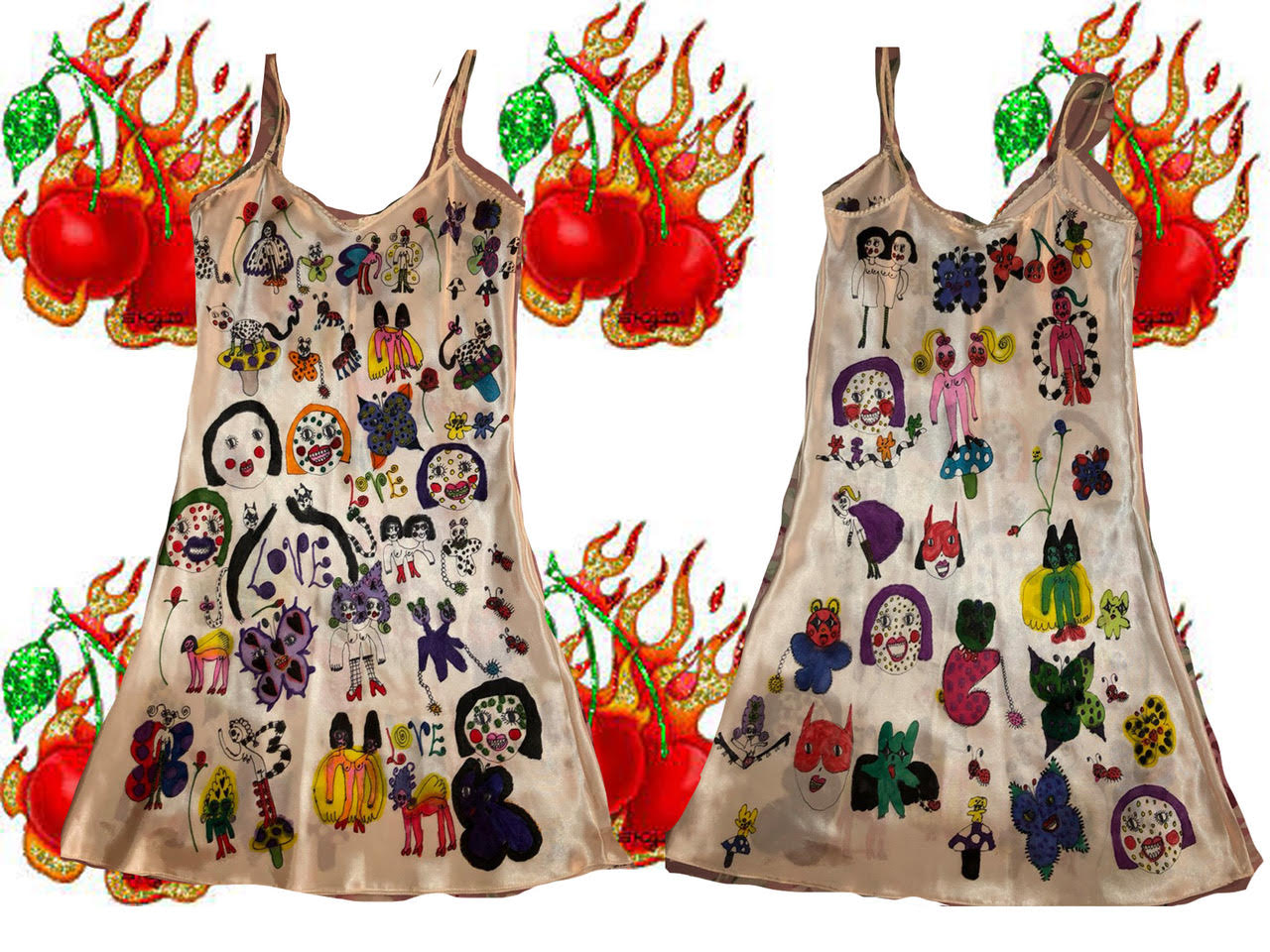
Andrea Smith, a New York-based multi-medium artist known for her intricate, oil-on-canvas paintings, also finds stability by experimenting with various creative outlets. One of her many design projects is giving secondhand clothing and denim, particularly Levi’s 501s and 505s, another life through natural dyeing processes and painted emblems that reflect her Greek Orthodox heritage. She currently sells her pieces to friends and DM inquirers, and prefers to focus on her craft over the idea of building a brand (or as her Instagram bio puts it, “No plan. Just intention.”). Andrea’s approach is a refreshing reminder that one can make things purely for enjoyment — for the love of the craft — and create a momentum of sales without having to establish themselves as a brand.
“Maybe that makes me a bad business person, but I like that this is something I can pick up from time to time and that it’s not my full identity,” Smith says. “I’d like to resist the pressure of becoming a brand for as long as I can.”
Outside of reimagining recycled clothing, Andrea publishes a small newspaper (which can be purchased at Lower East Side’s Colbo or online), designs sets, album covers and interiors, and provides creative direction for small businesses — all of which allows her to connect with people and build community, something she prioritizes. “I like to be able to exercise different muscles so that when one project is weighing me down, I can find space in another. This way of working is more sustainable for the environment and for me. I just want fluidity in my life.”
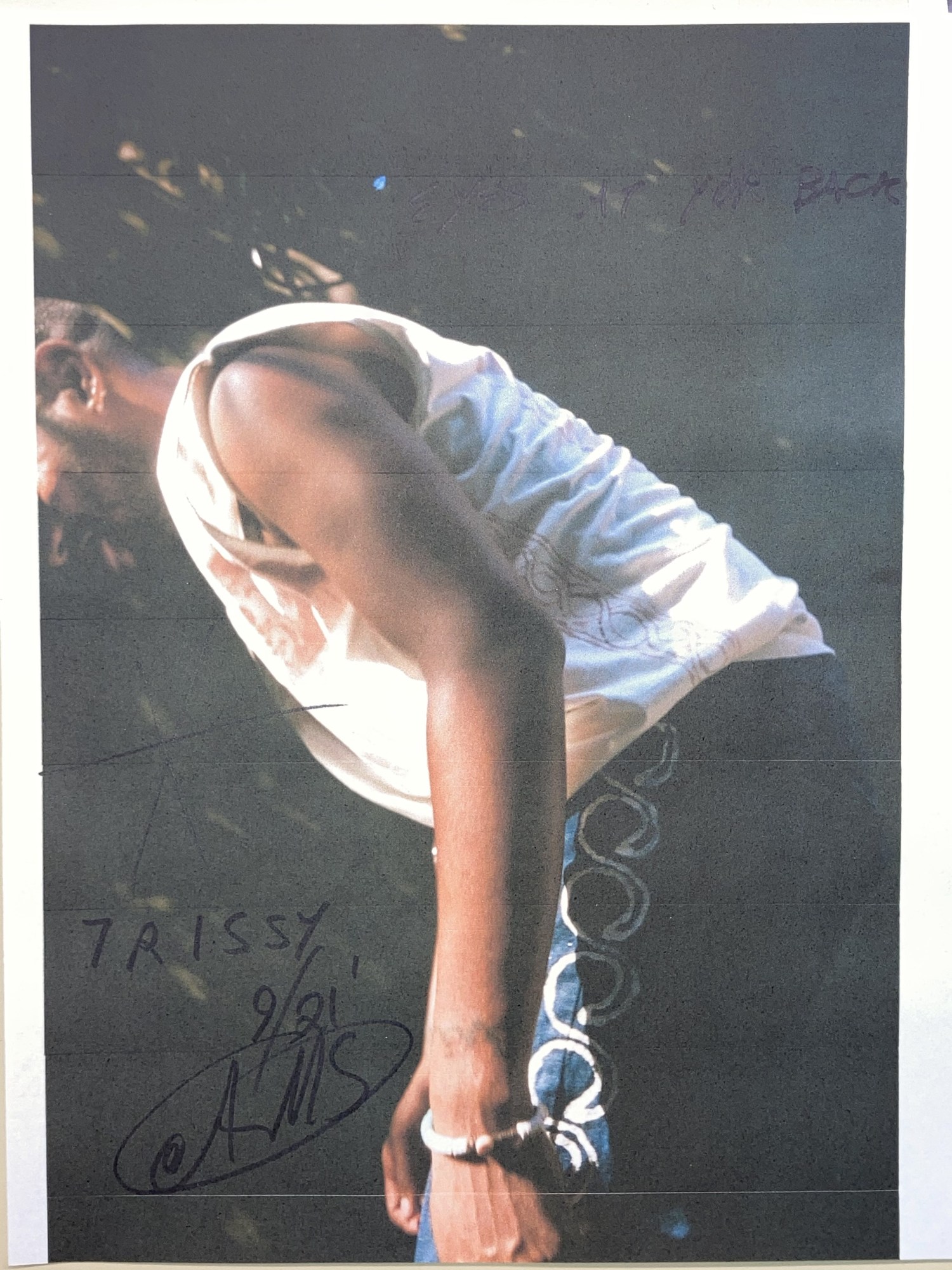

Ancient textile revival techniques and custom-made adornments may not be the foundations of a scalable business plan, but these craft-focused designers are posing a question that the retail industry has needed to consider for ages: if we already have enough clothing, why not stay small but steady? “Working with only upcycled materials and small quantities is not the easiest margin wise, and retailers don’t always understand that,” Mariuka says, but her dream isn’t to cater to those retailers. “I just want to create, to share the beauty of upcycled art and encourage other brands to do the same.”
“The most rewarding part in designing this way is witnessing everyone’s creative contribution,” Bailey adds. “[Tigra Tigra] has a healthy, sustainable business, and there’s something really special in being okay with staying small — it’s how you get to stay creative.”
The promised result of making in an artful, resourceful way? Treasured garments that tell a story, minimize waste and hold a quality that can be passed on for generations to come.
